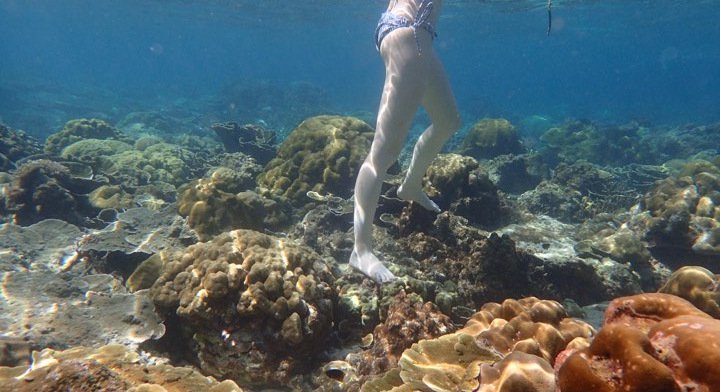The famed Maya Bay, near Thailand’s Phi Phi Island, east of Phuket, needs to be closed off to tourists entirely in order for corals and the marine ecosystem to recover comprehensively, marine life expert Dr. Thon Thamrongnawasawat said.
Also, to effectively protect the area, more officers need to be stationed at protected sites to ensure the ban on visits is enforced, Dr. Thon explained.
Dr. Thon, a marine activist who serves as the Deputy Dean of the Faculty of Fishery at Kasetsart University in Bangkok and as official advisor to the Department of Marine and Coastal Resources (DMCR), has been leading the fight to protect Maya Bay before overtourism kills the attractive marine life in the area.
“My first choice is to close Maya Bay entirely to let the corals there recover. But if that will not be done, then we must close the bay entirely for four months a year and limit the number of people accessing the bay outside this four-month period to just 2,000 people a day,” Dr.Thon said.
“We should also limit the number of boats arriving at Loh Samah Bay to just 100 boats a day,” he added.
Loh Samah Bay was agreed to be the access point from which tourists could still walk to see Maya Bay after a furore broke out in February when international news outlets reported that all forms of access to Maya Bay would be closed off to all tourists.
In clarifying that issue, Worapoj Lomlim, Chief of the Hat Nopparat – Mu Ko Phi Phi National Park, said, “Maya Bay itself will not be closed to visitors, we do not use the word ‘closed.’
“Maya Bay will simply be prohibiting all boats from accessing the beach via the bay during the period from June to September,” he said.
“There will be no boats allowed at all through Maya Bay. The marine life and corals need time to recover,” he said.
“However, the beach itself will not be closed to visitors because people can still access the beach on foot from an adjacent bay through the back, at which boats can park,” he added.
The bay where boats may land is called Loh Samah Bay, and is located on the south side of Phi Phi Lei Island. From there, tourists will be able to walk the 250 meters across the small isle to see Maya Bay firsthand.
However, Worapot in February repeated, as he said in late November last year, that the number of boats allowed to bring tourists to Loh Samah Bay will be limited.
The exact number of boats bringing visitors to Loh Samah Bay still has yet to be decided, he said.
However, pressure is mounting to limit the number of visitors, and quickly.
Dr. Thon pointed out, “The number of visitors to Maya Bay from March 1-18 reached up to 3,750 per day. The official process is not good enough to protect the environment.
“Adding extra DMCR officials at specific areas in national parks and at other islands that are tourist attractions is another way. Officials need to cope with thousands of tourists every day,” he added.
Dr. Thon said that the current moves to reduce the environmental pressure from overtourism simply were not working.
“I often visit Koh Phi Phi Lei and see at least 10 tour boats with at least 200 tourists on tour dives. This is quite overcrowded. We even also found a tourist Chinese who walked down onto corals to see them when it was low tide,” he said.
“The corals in that area area are a diverse range, such as massive corals, foliose coral, lettuce coral and other coloured corals, and she just walked on and on.
“Officers saw this and stopped her, and luckily not much damage was done to the corals,” he added.
This kind of incident should not happen, but it does happen again and again because there are not enough officers to cope with the number of tourists.” Dr Thon noted.
Adding to the problem is that the number of tourists visiting marine attractions along the Andaman coast is continuing to grow, Dr Thon said.
“During this time of year, every marine national park on the Andaman coast is open, and during the first three months of this year the number of tourists visiting these parks has increased 30% on last year,” he said.
Story: The Phuket News





Reader Interactions